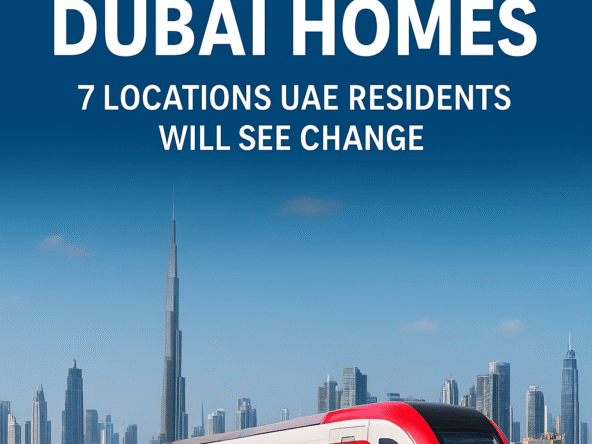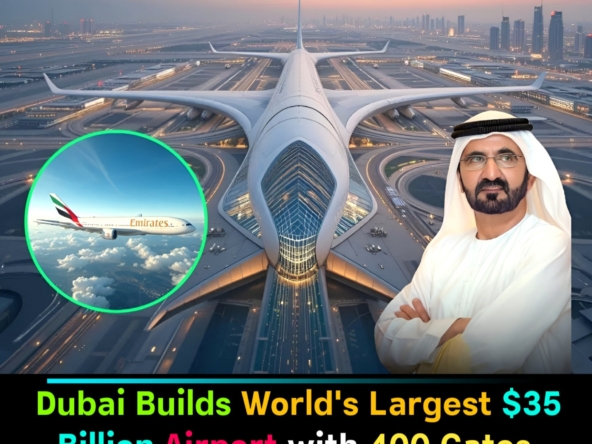Dubai’s Population Surges Past 4 Million in 2025: Real Estate Faces a New Era of Demand
Dubai, the crown jewel of the United Arab Emirates, has once again made headlines in 2025 as its population officially surged past the 4 million mark. This milestone highlights not just the emirate’s rapid growth, but also the shifting dynamics of its real estate sector, economy, and urban planning strategies. For investors, developers, and residents alike, this demographic boom represents both opportunity and challenge, ushering in what can only be described as a new era of demand for real estate in Dubai.
A Population Milestone with Global Significance
Reaching 4 million residents may not sound enormous when compared to mega-cities like Tokyo, Shanghai, or New York, but in the context of the Middle East, it is monumental. In 1971, when the UAE was founded, Dubai’s population was less than 200,000. Fast forward just over five decades, and the emirate has multiplied its population twenty-fold, positioning itself as one of the fastest-growing cities in the world.
This growth is not merely the result of natural population increases but is driven by international migration. Dubai’s status as a global hub for business, tourism, and lifestyle attracts talent from every corner of the world. From tech entrepreneurs and financial professionals to artists and hospitality experts, the city has become a melting pot of cultures, with expatriates comprising nearly 85–90% of its population.
Why Dubai’s Population Is Growing So Rapidly
Several key factors have contributed to this surge:
Economic Diversification
Dubai has successfully reduced its reliance on oil by becoming a hub for finance, logistics, tourism, trade, and technology. This diversification continues to attract skilled professionals seeking career growth.
Business-Friendly Policies
The introduction of Golden Visas, property-linked residency permits, and long-term investor visas has incentivized entrepreneurs and expatriates to settle permanently.
Mega Projects and Infrastructure
Developments such as the Dubai Creek Harbour, Palm Jebel Ali revival, and the upcoming Al Maktoum International Airport expansion are driving migration and investment into the city.
Global Events and Soft Power
After the success of Expo 2020, Dubai solidified its reputation as a global connector. Its continuous hosting of international events keeps the city in the spotlight, attracting both short-term visitors and long-term residents.
Real Estate: The First to Feel the Impact
A growing population inevitably places pressure on housing demand. For Dubai’s real estate market, this is both a boon and a balancing act. Let’s examine how this demographic milestone is reshaping the sector:
1. Rising Demand for Affordable Housing
While Dubai is often associated with luxury villas on Palm Jumeirah or high-end penthouses in Downtown, the bulk of new residents are professionals and families seeking mid-market housing. Communities like Dubai Hills Estate, Arabian Ranches 3, MBR City, and Dubai South are seeing increasing demand as they offer the perfect blend of affordability, accessibility, and lifestyle amenities.
2. Luxury Segment Continues to Thrive
Dubai’s luxury real estate market has been breaking records in recent years, driven by high-net-worth individuals (HNWIs) relocating from Europe, Asia, and the Americas. With population growth, the ultra-luxury sector remains strong, particularly in Palm Jumeirah, Jumeirah Bay Island, and Emirates Hills.
3. Rental Market Tightens
As population growth outpaces new supply in some areas, rents are climbing steadily. Popular expatriate-friendly communities like Dubai Marina, Downtown, and Business Bay are witnessing rental increases, pushing residents to explore emerging neighborhoods.
4. Demand for Mixed-Use Developments
The new generation of residents seeks not just housing but integrated lifestyles. As a result, demand is high for mixed-use communities where residents can live, work, shop, and relax without long commutes. Developers are responding with projects that emphasize walkability, sustainability, and smart technology.
Challenges of Managing Population Growth
While this milestone reflects positively on Dubai’s appeal, it also presents challenges that authorities and developers must carefully manage:
Infrastructure Pressure
Roads, metro lines, utilities, and public services face higher demand. Dubai has already announced ambitious expansions like the Dubai Metro Blue Line, but continued foresight is essential.
Balancing Supply and Demand
Although 150,000 new homes are expected to hit the market by 2026, developers must balance avoiding oversupply while still catering to increasing demand.
Sustainability and Green Living
A larger population places greater strain on natural resources. Dubai has committed to its 2040 Urban Master Plan, emphasizing green corridors, renewable energy, and eco-friendly communities.
Affordable Housing Shortages
With rising rents, ensuring affordable housing for the middle-class expatriate workforce remains critical.
Opportunities for Real Estate Investors
For investors, Dubai’s population surge past 4 million unlocks several opportunities:
Rental Yield Growth: Increased demand translates into stronger yields, particularly in mid-market communities.
Off-Plan Investments: Developers are launching ambitious new projects to meet demand, giving investors access to attractive payment plans and capital appreciation potential.
Commercial Real Estate: A larger population also means greater need for retail, office spaces, and logistics hubs.
Tourism-Linked Real Estate: With Dubai continuing to attract millions of tourists annually, short-term rental investments (Airbnb-style properties) are set to thrive.
The Road Ahead: Dubai’s 2040 Vision
Looking forward, Dubai’s 2040 Urban Master Plan envisions a city that balances growth with livability. By the time the emirate’s population hits 5.8 million by 2040 (official projections), the government aims to ensure that 60% of Dubai’s land is dedicated to nature reserves and green spaces.
Future plans include:
Expanding the metro and public transport network.
Building self-sustained “20-minute cities” where residents can access all essentials within a short walk or bike ride.
Creating more affordable housing to retain long-term residents.
Positioning Dubai as the world’s most visited city and a global hub for sustainability and innovation.
Conclusion
Dubai crossing the 4 million population milestone in 2025 is more than just a statistic—it is a turning point for the emirate’s real estate market. The demand for housing, infrastructure, and lifestyle amenities will continue to expand, creating fertile ground for investors and developers.
Yet, this growth comes with responsibilities. Balancing luxury with affordability, innovation with sustainability, and rapid development with livability will define the next era of Dubai’s real estate.
For those watching closely, one thing is certain: Dubai is not just growing in size—it’s evolving into a city of the future. And with each new milestone, the emirate reaffirms its position as one of the most dynamic real estate markets on the planet.





